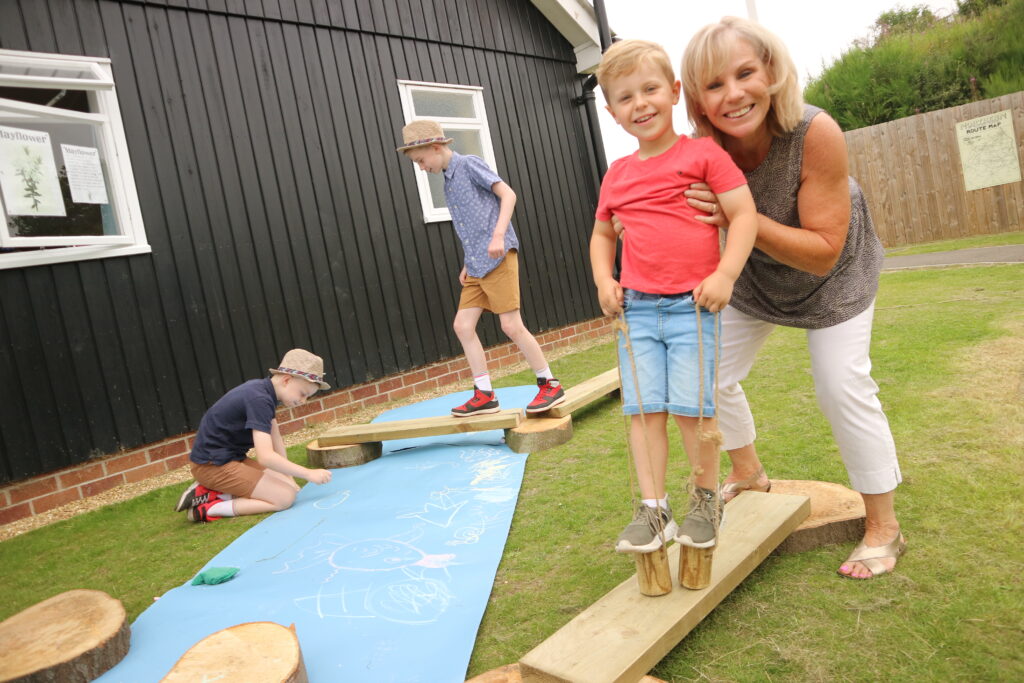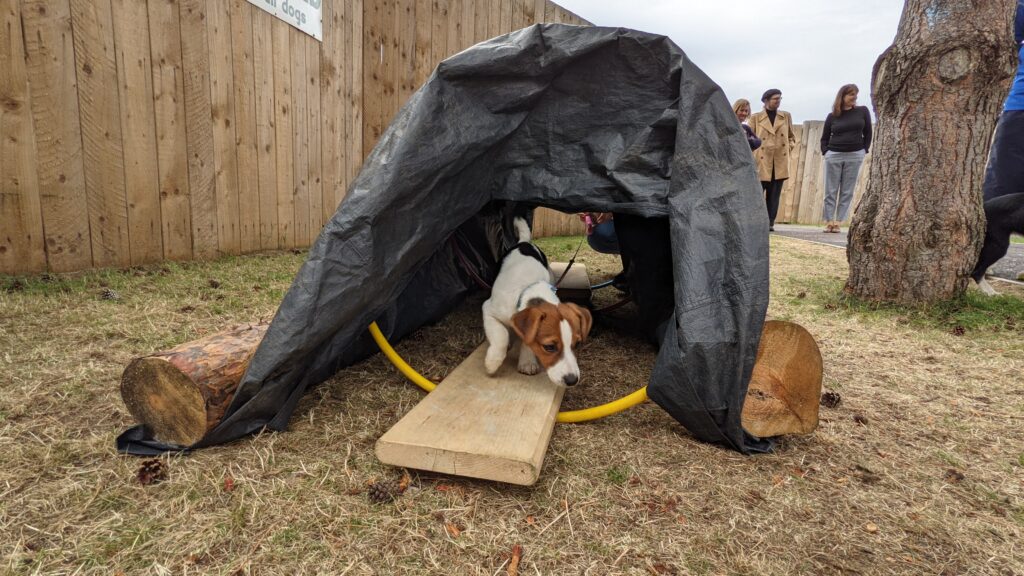By Gez Straker, Remaking Beamish Community Participation Officer
Starting to research play and playgrounds in the 1950s for the Remaking Beamish project has certainly not been a chore this summer. Next year will see the opening of several exciting open areas for museum visitors to enjoy in The 1950s Town.
The recreation areas, due to open next year, include space for putting and a kick about, allotments you can get your hands dirty in, a bowls pavilion and green, and a park with play equipment! Lots of fun spaces and times ahead.
Parks and playgrounds are nothing new and not unique to the 1950s. We have an abundance of beautiful parks and recreation areas in the North East to enjoy today, some of which date from the nineteenth century. In working on plans for the recreation areas at Beamish and thinking about post-war developments taking place across society, I was particularly drawn to the story of adventure playgrounds.
Adventure playgrounds originated in Denmark after the Second World War. The idea behind the areas, initially referred to as “junk” playgrounds, was that children would and could create their own play and play equipment with materials provided.
Following a visit to Denmark, and from seeing how children played in bomb sites in London, the idea of the adventure playground was championed by Lady Allen of Hurtwood, a landscape architect and campaigner for child welfare. Adventure playgrounds were seen as an alternative to the slides and swings of more traditional playgrounds, although they received a mixed reception from some adults and local councils. By the end of the 1950s there were approximately seventeen adventure playgrounds nationwide.
In the North East, newspaper reports seem to suggest one in Felling and one in Blyth in the 1950s. In Newcastle, a local boy wrote to the Lord Mayor to campaign for some to be set up in the city. Through the course of our work, we have been extremely fortunate and privileged to work with people who have spent their working lives in play in one way or another.
Dave Turnbull and Chris Nevis both worked as Play Leaders on adventure playgrounds in Newcastle during the 1960s and 1970s. As Play Leaders they saw, experienced and captured this inventive, fun and creative type of play. Spending their days searching for or “scrounging” materials, their evenings and weekends with young people could be spent creating towers, Wendy houses, rafts and anything else they could think of! Residential development in the city meant materials such as scaffold boards, doors, telegraph poles and bricks could be used in all manner of ways. Dave captured many iconic images of this type of play and some of his images have been on display at the museum this summer by the 1950s welfare hall. Although these photographs are from the 1970s, adventure playgrounds were not new to that decade and these photos help illustrate a type of play that really took hold in the 1950s and 60s. We hope that through their display and the summer holiday activities we might find out more about play in the 1950s too.
As part of Beamish’s Summer of Fun event we wanted to trial different types of play here at the museum and, having been taken by the ideas behind adventure play, we wanted to create some adventurous play opportunities for visitors. So each Thursday we’ve had out our planks of wood, scaffold board, tree trunks, massive strips of paper, ropes, tarp, crates and more and… had a play…

In much the same way that original adventure playgrounds were donated materials, our adventurous play activities have been able to take place due to the kind donation of wooden planks and sleepers by MKM Building Supplies who are a Business Friend of the museum.
Families have enjoyed taking part in and creating walkways, “swimming” in our big, blue paper river and chalking in all manner of beasts in the water for people to try to avoid or not fall into. Crates and planks have become slopes, tarps and hula hoops have created tunnels to crawl through and dens to sit under, ropes have made giant skipping ropes, and sandcastles have been made from spoons and enamel tins in our sandpit. Paper boats filled with gravel have sailed down our paper river and many, many attempts have been made to walk on our stilts.

It’s been wonderful to see the different ways people have approached the activity. At times it felt like a permission to play was needed, initially people wanted to know which way to go round and what to do but as we explained and let people move things, create new courses and adapt, you could really see the possibilities of this type of play.
Our 1950s playground at the museum will have some traditional fixed play equipment such as swings and slides… who doesn’t love them?! But we hope our exploration into different types of play and that very creative, more child-led play through the imaginative use of equipment will also feature more in the 1950s.
Adventure playgrounds saw a decline in the 1980s although the ethos behind them has had resurgence in different ways in subsequent years.
In 2010 an adventure playground opened in Shiremoor, North Tyneside. The only one in the North East today, it’s a fantastic resource and site and is well worth a visit if you’re in the area. We’re very grateful for their support and help in our research and development of our activities at Beamish.
If you have any memories of play in the 1950 or suggestions of playful activities you’d like to see at the museum then please get in touch, email: geraldinestraker@beamish.org.uk.
For more information on the 1950s park and recreation ground please click here.
